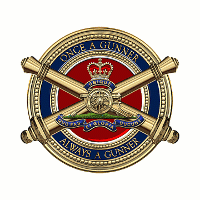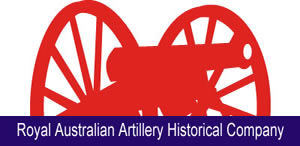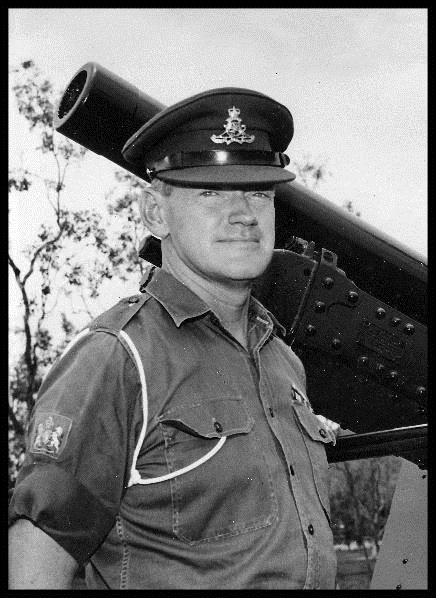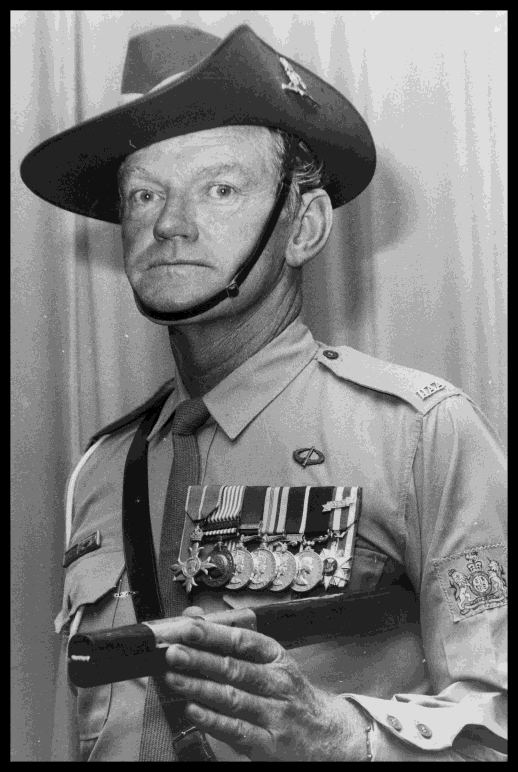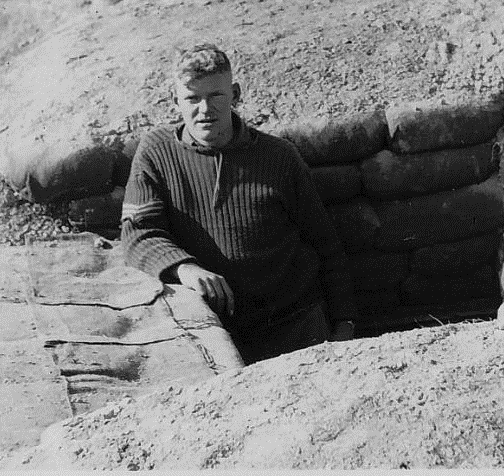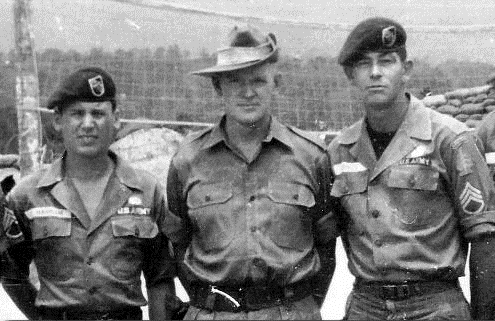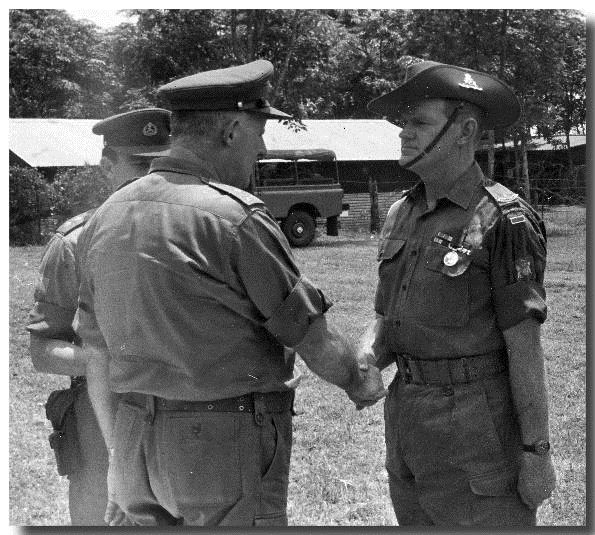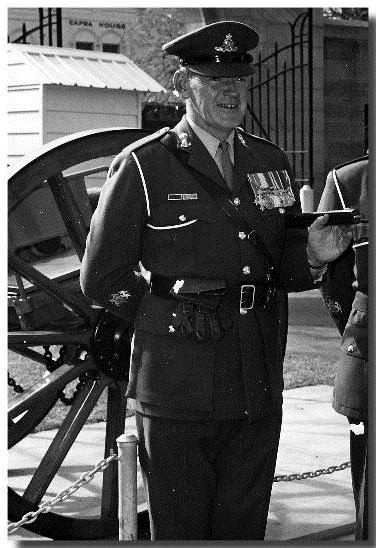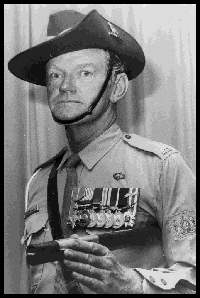Gunner Donkin enjoyed the comfortable accommodation with the Japanese doing chores and a trip to Tokyo for guard duty on the palace was ‘memorable’. Not long afterwards, another reinforcement arrived—Tom Banfield another driver—and the two became best mates. Tom had come from a farm outside Melbourne and introduced Don to country slang, especially the word ‘goose’ meaning ‘drongo’, a term which caught his fancy and quickly became part of Donkin’s vocabulary.
A Field Battery returned to Australia in 1949, amalgamated with 53rd Battery and became the fledgling 1st Field Regiment at North Head. Don tells how he was trained as a bulldozer operator soon afterwards then sent to work at Lithgow during the Coal Strike. Perhaps one of the most enjoyable duties Don experienced was when he and Tom Banfield were lead drivers for the precision regimental musical drive at the annual Army Tattoo in Sydney. The early 1950s were exciting years—1st Field moved to Georges Heights, Don and Tom retrained as Technical Assistants Royal Artillery (TARAs), Don married Moira and was also promoted.
By 1953, Australia’s commitment to the Korean War and the 18-year-olds’ compulsory National Service Scheme were in full swing. Corps conversion to Infantry began and Don found himself as a platoon sergeant in Dog (Delta) Company, 3rd Battalion Royal Australian Regiment for service in Korea. He recalled, “From being a TARA sergeant in A Field Battery to becoming a rifle platoon sergeant in 3 RAR was quite a culture shock. I discovered Gunners really are brighter than infantry soldiers. People were amazed that I could read a map and work the radio at the same time, but I must admit I used to get a little terse when the mortar platoon, who were all gunners, would drive past in their Jeeps.”
Don returned to Australia in 1954 after 12 month’s operational service, was promoted and became the troop sergeant major of Baker Troop in A Field Battery, then battery sergeant major (BSM) of the battery. When 1st Field Regiment moved to Holsworthy in 1955 and S (later 102nd) Field Battery was raised, WO2 Donkin became its first BSM.
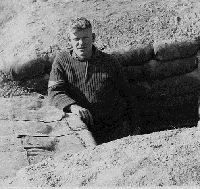 |
The progressive reduction of National Service in the late 1950s saw a reduction of all warrant officers who were not confirmed in their rank. Don became a sergeant again and was posted to the School of Artillery. “These were difficult years for a Regular soldier, and whether to go or stay was the decision to be made, and fortunately the colonel at the School was Bill Ford who convinced me to stay,” reminisced Don. Nevertheless, in 1960 he was again promoted warrant officer and appointed BSM of 102nd Battery at Holsworthy.
Whilst attending a physical training course at North Head in early 1963, Don received a written message from his unit. It read, ‘DONKIN VIETNAM, OCTOBER’. Courses for the Australian Army Training Team Vietnam followed at Canungra and Queenscliff, Victoria and then a posting order for movement to Vietnam in July. Don read with a little dread, ‘Vice Sergeant Hanking’ the first Australian soldier to be killed in Vietnam. In quick succession after arriving in country, now WO1 Donkin found himself with the American Special Forces at Khe Sanh. |
| These were volatile times—working with the primitive Montagnard soldiers, over the border patrols, President Kennedy’s assassination, a Vietnam military coup and the assassination of its President Diem. On Good Friday 1964, Don was programmed to do a flyover of the country in the Khe Sanh area, but his commander Captain Floyd Thompson said he would do it. Donkin recalled, ‘He was shot down and captured. He was the longest serving POW in Vietnam, being released in the second group in 1973.’ Don took command of the Khe Sanh Special Forces and led them gallantly till he returned to Australia in July. For this service, WO1 Donkin was appointed a Member of the Order of the British Empire and awarded the American Bronze Star.
Back in Australia in 1964, Don was posted to the School of Artillery as BSM Recruit Training Wing. National Service for Vietnam ensured a very busy time over the next four years but WO Donkin proudly recalls, “During this time I had the pleasure of meeting some of the best young men Australia had produced.” His Wing boss, then Captain Alan Hutchinson described him as ‘a born leader—with his quiet but firm voice, he could make
soldiers want to do something … anything for him.’ |
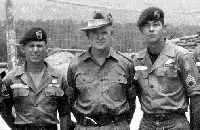 |
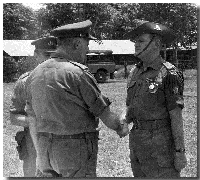
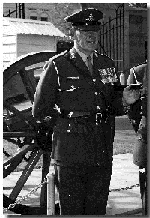
|
In 1968, Don was appointed RSM of 4th Field Regiment in Townsville. His arrival date was delayed by some weeks as he was selected as Ensign to the Colour for the Australian Contingent attending the 50th Anniversary of Armistice Day in Paris, France. ‘The parade in Paris and the contingent’s visit to the Australian war memorial at Villers Bretonneux are two events I will never forget,’ Don is quoted as saying. ‘You cannot imagine the pride one feels when representing your country in such a way.’
Under Lieutenant Colonel Brien Forward, 4th Field Regiment undertook its second tour of duty in Vietnam during 1970−71 with WO1 Donkin as the RSM. Brien has since passed on, but the second in command (2IC) at this time was then Major Don Quinn. He describes RSM Donkin: ‘I had great admiration for him. We became good friends, I trusted him and appreciated his judgement, advice and help. He was the typical fair, firm and friendly RSM who had the respect of all ranks both within and outside the unit. He didn’t get angry, but in his calm, clear and concise voice never left anyone in doubt as to what he required.’
Don Donkin was so well versed in what went on around Regimental Headquarters that, when the 2IC went home to Australia on Rest and Recreation (R&R) leave, Donkin assumed the duties of that appointment in addition to his own. On his return, Quinn was met at the Nui Dat airstrip by Donkin. ‘Here’s your vehicle,’ said DD, ‘and thank God you’re back,’ he concluded.
After Vietnam, WO1 Donkin returned to Sydney as the RSM of Victoria Barracks in 1971. ‘To return from a regiment on active service to RSM Victoria Barracks is a super culture shock. Nevertheless, after learning the procedures and sorting out the 500 honorary members [of the Sergeants’ Mess] it was an enjoyable posting,’ he mused.
Don’s final regimental posting was RSM School of Artillery from 1973−1978. This was a period of great change as the Army shrank with the loss of National Service, and policy to Forward Defence. Nevertheless, in his typically loyal, professional and efficient manner, he settled back into his beloved Manly area again. A lasting legacy Don created was the annual RAA Warrant Officers and Sergeants’ Farewells. Though his mate Tom Banfield was farewelled into retirement by his final unit (Headquarters 1st Division), Don was miffed that the Royal Regiment had not made an effort to recognize this man’s long and dedicated service. As the president of the Regimental Sergeants’ Mess, Don arranged a grand farewell for Tom at North Head. There was a great turnout for this inaugural occasion and as Don’s son Chris says, ‘the rest is history’. |
|
|
Donkin’s terminal posting was a staff captain’s appointment at Headquarters 2nd Military District at Victoria Barracks, Sydney. WO1 Don Donkin discharged on 6 October 1980 after 33 years of meritorious service. ‘I made hundreds of friends during my 33 years’ service with the Army, and the names you come back to are your commanding officers: Tim Rodriguez, AL McDonald, Russell McNamara, Bill Ford, John Howard, John Salmon, Brien Forward, Mick Burge, Mick Crawford and George Salmon and, the person who scared the hell out of me as a young Gunner in Japan, “Bull” Storey.’ Don worked on the NSW Repatriation Review Board after leaving the Army and then as a protocol officer for the NSW state premier during Australia’s Bi-Centenary celebrations. He finally retired in 1989.
On the family front, Don and Moira had two sons and two daughters. Don reflected, ‘Over these years, I remember the separations, the homecomings, the joys and sorrows that Army life brings. Through all of it we reared four children who have now added to our family nine grandchildren [as of 1998] so we are still waiting for retirement.’ Sadly, Moira predeceased Don in 2013.
Surfing and surf lifesaving remained Donkin’s first passion and this was recognised by the granting of life membership to the Queenscliff Surf Life Saving Club. Unfortunately, the years were at the top or the bottom of the National Rugby League ladder, whether they won or lost last weekend, and even if State of Origin matches took away their best players, Don wore his maroon and whites as a badge of honour and would argue and support the Sea Eagles at the drop of a hat.
On the personal side, I consider myself a friend of Don Donkin, particularly through our mutual mate, Tom Banfield (deceased 2008). The last time I visited Don and Moira in their Cromer NSW unit, I offered to bring fish and chips for lunch. Moira would not hear of this, but what did we have for lunch? -fish and chips that Moira had purchased. The last time I saw Don was in 2014 at the National Gunners Dinner, Caloundra with his son, Major Chris. It was so wonderful to see Don beam with pride as he introduced Chris to his many old mates.
Vale Donald Wellow Baldwin Donkin MBE—BCOF Gunner, Korea Infantryman, Vietnam Training Team leader and Artillery RSM, loving family man, passionate surfer and Manly Sea Eagles enthusiast, a gentleman Gunner of distinction gone to the Great Gun Park Up Above after 87 years of dedicated service to his country.
| |
|
|
| It is with deep appreciation that I acknowledge Alan Smith’s permissionto use quotations from his ‘Cannonball’ August 1998 articleGunners of Distinction—Regimental Sergeant Major Donald Donkin MBE. |
| |
|
|
| |
|
|
| |
|
|
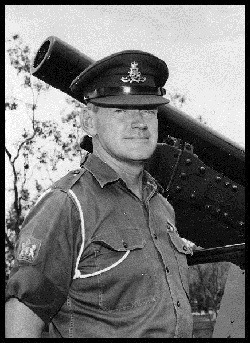
A Gunner of Distinction
RSM Don Donkin MBE |
|
